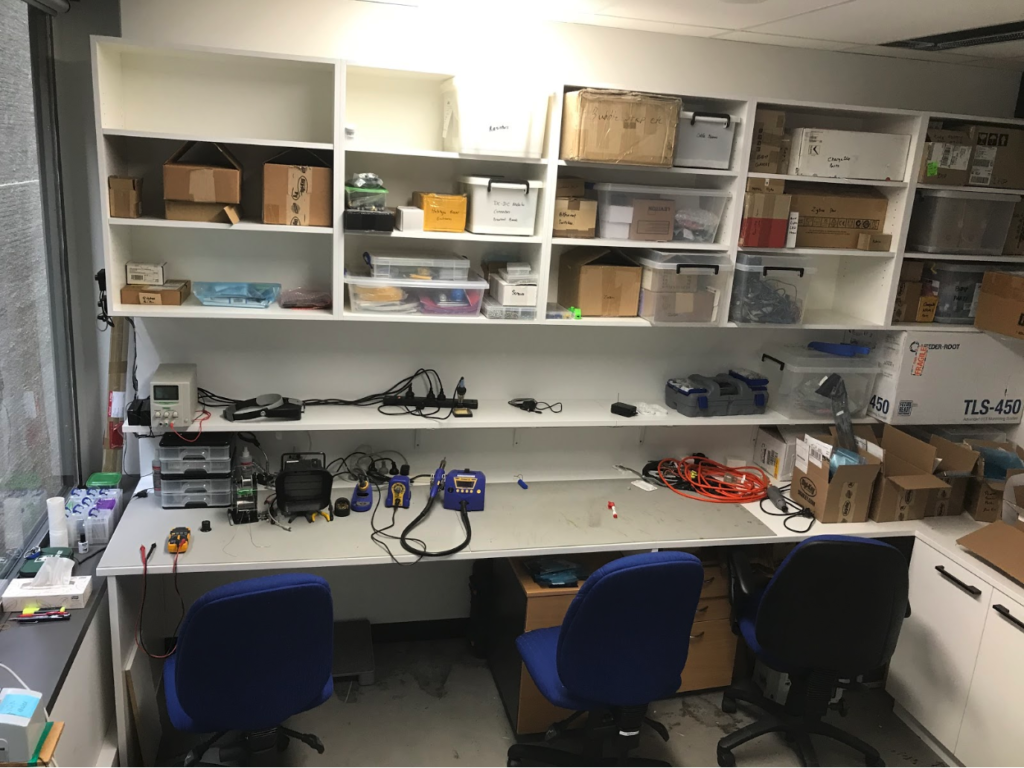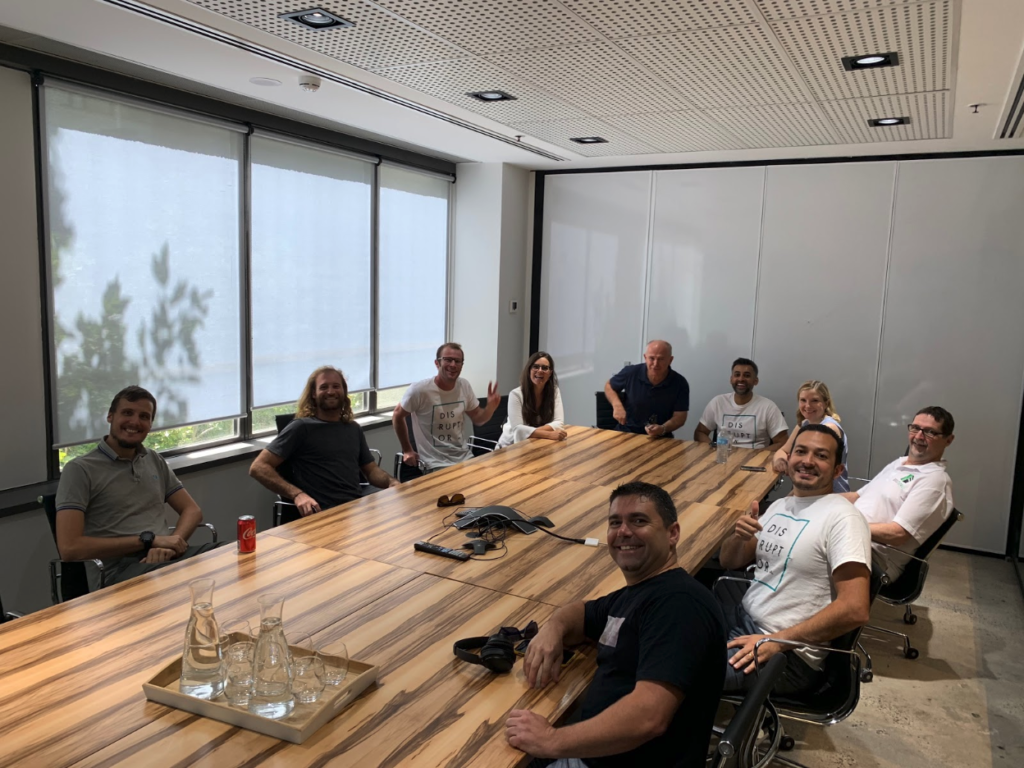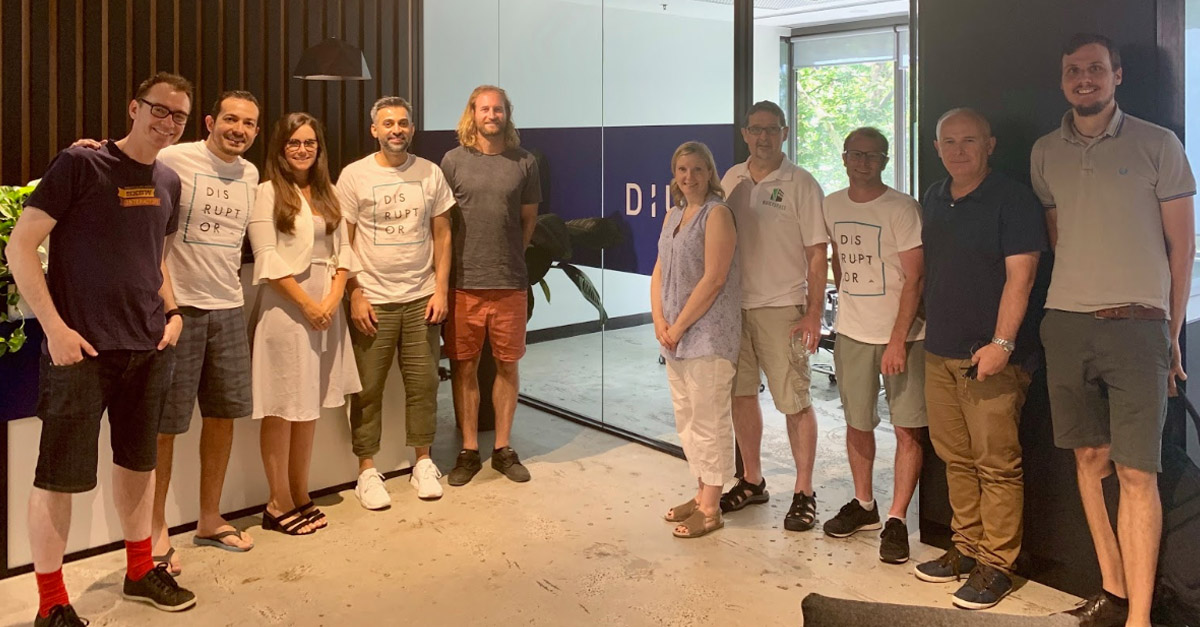On a hot January day, a group of intrepid startupers from the 2019 cohort of Startupbootcamp EnergyAustralia* visited the DiUS Melbourne office to find out a little more about how to develop an Internet of Things (IoT) product from DiUS principal consultant – IoT, Zoran Angelovski. I spoke to Zoran after the tour to get his main takeaways.
As always, you need the right toys
You need to have a lab – the scientific type, not canine. When dealing with a product that involves hardware, as well as embedded software, it’s important to have a dedicated area where you keep all the toys. However, be mindful that these days, you can actually do a lot with very little.
So while we have eight years’ experience in creating Internet of Things products and have designed and built a number of products, our lab is not actually massive – but it’s got all the things in there we need to tinker and experiment, as well as build hardware at a printed circuit board level.
Some of these tools may not in themselves be risky (I’m fairly confident that pressing the ‘go’ button on a 3D printer has never killed anyone) but when you are using them all together it’s best to have them contained in a restricted area and take the appropriate safety precautions. This is particularly important when dealing with products in the Energy space, as we often are in the DiUS lab, and have prototype devices connected to the 240V mains supply.

Hardware, software, building a product is always about the user
We cannot emphasise the importance of human-centred design enough in finding product/market fit. We shared our PowerSensor journey (DiUS’ easy-to-install device that empowers consumers by monitoring their solar generation and consumption) and the key insights that we gained from testing and installing the product that really helped drive not only the product design, but also the instructions we provide to users.
There are extra steps when you manufacture a device for mass production
We often get asked about producing a device at scale. For a startup — or indeed any enterprise that doesn’t haven’t experience in this area — it’s important to understand that it’s not just about building something and handing it over to the manufacturer. You also need to develop a way for them to test that your product is working successfully, an ‘end of line’ test.
In actual fact, what you need to do is build the prototype and develop the embedded software. Test it out in the wild. Many times. Get feedback and refine. Then test again. At DiUS, we also make good use of our UX experts to make sure that it is fit for purpose according to product appeal and needs / behaviour. Then we prototype that new design and test it onsite in the real world. We take the product through compliance according to the relevant standards. Then we get a manufacturing package ready which includes an end-of-line tester. And we then work with the manufacturer to get the product mass produced.
Going to market strategies and intellectual property
The tour included a wide-ranging roundtable discussion that delved into many areas, but it was clear that intellectual property, exclusivity and partnerships are very challenging issues for the startups to navigate. There are no easy answers; but the key takeaway is to be aware of the ramifications of any decisions, seek advice and avoid getting into partnerships that may limit a startup to innovate and grow.


*DiUS is a sponsor of the Startupbootcamp EnergyAustralia accelerator program.

